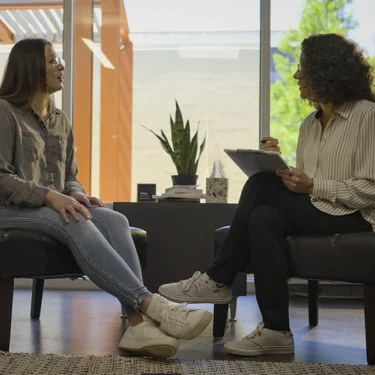One section tucked in the American Rescue Plan – President Biden’s $1.9 trillion relief package that he signed into law on March 11 – gave harm reduction organizations more optimism than they’ve had in years that opportunities would replace obstacles.
Lawmakers included in the bill $30,000,000 in grants for governments and organizations, including nonprofit community-based organizations, to support overdose prevention and syringe
services programs.
“I think it’s the first time it’s ever happened that Congress has appropriated money directly to harm reduction providers,” said Grant Smith, deputy director of national affairs at the Drug Policy Alliance. “We consider it historic that Congress approved this funding.”
Investing in Harm Reduction
The timing of this new federal funding is significant.
The overdose epidemic has highlighted the role harm reduction organizations play in preventing overdoses and overdose deaths and limiting the spread of infectious diseases. But the pandemic slashed budgets and forced harm reduction organizations to cut back as demand began to increase, undermining efforts to keep people safe and keep them alive, advocates say.
“That federal funding means a lot. I think the acknowledgment is huge,” said Luke Tomsha, founder and executive director of The Perfectly Flawed Foundation, a community focused non-profit in LaSalle, Illinois, that provides harm reduction services and peer support. “I’m just glad the mindset is changing. It’s a step in the right direction.”
Importantly, while federal law still prohibits the use of most funds from the U.S. Department of Health and Human Services to purchase syringes for distribution to people who use drugs, that restriction does not apply to the newly appropriated money included in the American Rescue Plan, said Corey Davis, director of the Harm Reduction Legal Project at the Network for
Public Health Law.
A survey conducted in partnership with the North American Syringe Exchange Network found 43% of 173 syringe service programs reported a decrease in availability of services due to COVID-19 and 25% said one or more of their sites closed.
In a separate survey, the Drug Policy Alliance found that 40% of organizations lost revenue in 2020, while demand increased 91%.
Those cutbacks and closures reduced access to new syringes and medications for opioid use disorder and testing and treatment services for HIV, hepatitis C and other sexually
transmitted infections.
That’s a big public health issue, said Alice Asher, senior service fellow at the CDC’s Division of
Viral Hepatitis.
“We know syringe service programs are highly effective in preventing infectious disease. There’s little else that’s so effective for this population,” she said.
A 2019 George Washington University study estimated that Prevention Point Philadelphia, which provides harm reduction services, prevented more than 10,000 HIV infections over 10 years through its syringe service program.
In 2020, San Francisco prevented 3,200 overdose deaths because of it naloxone distribution program, according to the DOPE Project, an initiative of the Harm Reduction Coalition that trains outreach workers and people who use drugs.
The concern is that there aren’t more programs distributing syringes and naloxone, harm reduction advocates say.
Only 351 syringe service providers were in operation as of March 30, according to the North American Syringe Exchange Network.
New federal funding will help harm reduction organizations by stabilizing and supplementing their budgets and by allowing them to increase efforts to provide harm reduction resources to people who use drugs, Smith said, but the Substance Abuse and Mental Health Services Administration must still clarify allowable uses for the funding.
“The challenge will be for us to make it as easy to possible for organizations, especially the smaller ones, to apply for and access the funding,” he said.
Tomsha also sees potential hurdles.
“The challenge now is making sure the federal funding goes directly to building capacity and sustainability around harm reduction organizations. We may not be experts at writing grants, but in most cases we are best equipped to deliver services and it’s important we are built into the fabric of our respective communities,” he said.
With funds provided by and in collaboration with the CDC, the National Council for Mental Wellbeing, also has provided funding to promote harm reduction strategies through a series of 16 grants to organizations across the country.
More than Money
Lack of money isn’t the only obstacle harm reduction advocates face.
Stigma, restrictive state and local laws and community resistance also remain strong.
“While we are demonstrating that what we do works and saves lives, we are up against a wall,” said Anna McConnell, executive director at Maine Access Points. “We experience political pushback because harm reduction challenges criminalization, and criminalization has been the norm in terms of dealing with drugs and drug users. We are constantly in this political battle to defend the lives of our participants. To defend harm reduction as a solution.”
Naloxone isn’t widely available as it could be. While numerous states have taken efforts to expand access to naloxone, accessing the life-saving opioid overdose antidote remains a significant challenge in many communities.
Eleven states still criminalize all syringe service programs. Other states allow distribution of syringes in some areas, but not in others.
In Pennsylvania, for instance, syringe service programs are illegal everywhere except in Philadelphia and Pittsburgh.
Some states are tightening restrictions.
In West Virginia, state officials are considering a bill that would allow syringe service programs, but only in very limited circumstances, including where the local county sheriff approves. State lawmakers added that new provision to the bill despite the fact that West Virginia is home to two of the four worst HIV outbreaks in the nation and despite being told that intravenous drug use has fueled the outbreak.
“If the goal is to have a terrible system, we’ve achieved that,” Davis said.
It’s plainly obvious that making syringes and naloxone widely available would dramatically reduce overdose deaths and the spread of infectious diseases, he said.
But those decisions are in the hands of state and local elected officials, and community resistance often continues to guide public health policy.
“Harm reduction is a blanket term for commonsense strategies,” Davis said. “But we don’t have commonsense drug policy in this country. Many government officials still believe that drugs are bad and people who use drugs are bad. Dedicated federal funding for harm reduction is a good start, but most federal, state and local policy is still rooted in criminalization and stigmatization of people who inject drugs. That needs to change.”
- Read the National Council press release here about the grant program, Preventing Overdose & Increasing Access to Harm Reduction Services during the COVID-19 Pandemic.
- Read about the 16 harm reduction organizations receiving a grant through this program here.
- Read our environmental scan about the impact of the COVID-19 pandemic on harm reduction services here.
- Read our first story in this series here.
- Read our second story in this series here.
Editor’s note: This project is supported by the Centers for Disease Control and Prevention (CDC) of the U.S. Department of Health and Human Services (HHS) as part of a financial assistance award totaling $750,000 with 100% funded by CDC/HHS. The contents are those of the author(s) and do not necessarily represent the official views of, nor an endorsement, by CDC/HHS or the U.S. Government.
Guest Author
Senior Writer
National Council for Mental Wellbeing



